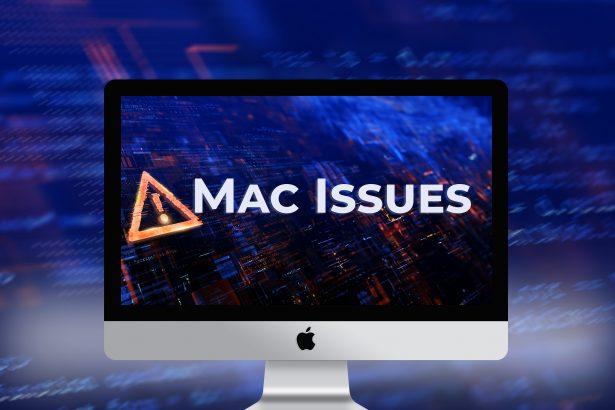MasterSpin is a deceptive application identified as adware that targets Mac users. It has been flagged as a security threat by several reputable antivirus vendors. Once installed, MasterSpin floods devices with intrusive ads—pop-ups, banners, and redirects—that not only interrupt user experience but may also expose individuals to severe security risks. As part of the Adload malware family, MasterSpin is especially problematic due to its persistent behavior and stealthy installation techniques.
MasterSpin Adware Summary
| Category | Details |
|---|---|
| Threat Name | Ads by MasterSpin |
| Threat Type | Adware, Mac Malware, Mac Virus |
| Associated Emails | N/A |
| Detection Names | Avast (MacOS:AdAgent-L [Adw]), Combo Cleaner (Gen:Variant.Adware.MAC.Adload.17), ESET-NOD32 (A Variant Of OSX/Adware.Synataeb.H), Kaspersky (Not-a-virus:HEUR:AdWare.OSX.Adload.j) |
| Symptoms | Slow Mac performance, intrusive ads, browser redirects, unusual CPU usage |
| Damage | Privacy issues, data theft, exposure to scams, unwanted software downloads |
| Distribution Methods | Free software bundling, deceptive ads, torrent downloads |
| Danger Level | High |
What is MasterSpin?
MasterSpin masquerades as a useful tool or utility app but behaves as adware once installed. Its primary function is to generate revenue for its operators by pushing ads onto the user’s screen. However, these ads are far from harmless. They often redirect users to malicious or fraudulent websites that may host phishing attacks, fake giveaways, or malware-laden downloads.
Users may encounter this adware after clicking deceptive pop-up ads, installing bundled software from free download sites, or downloading torrent files. Once inside the system, MasterSpin can start collecting user data, slow down device performance, and make itself difficult to remove by embedding persistence mechanisms into the system.
Why MasterSpin is Dangerous
The real threat behind MasterSpin lies in the ads it generates. These aren’t typical promotional banners—they are often embedded with malicious redirects that lead users to phishing pages, tech support scams, and websites that download harmful files onto the device. Moreover, users may be prompted to enter sensitive information such as login credentials, banking information, or personal identification details. The risk of identity theft and financial fraud is very real.
Furthermore, adware like MasterSpin can silently collect data about your browsing habits, visited websites, and search queries. This data is often sold to third parties or used for further targeted advertising and manipulation.
Persistent in nature, MasterSpin often installs additional configuration profiles or background processes that make its removal difficult for the average user. It may also alter browser settings to ensure its ads are continually displayed.
Method 1: Manually Removing Adware from Your Mac
Step 1: Uninstall Suspicious Applications
- Open
Finderand navigate toApplications. - Carefully review the list and look for applications you don’t recognize or didn’t install.
- Drag any suspicious applications to the
Trash. - Empty the
Trashto ensure they’re permanently removed. - Open
System Preferences>Users & Groups>Login Items. - Remove any unknown startup programs by selecting them and clicking the
-button.
Step 2: Remove Unwanted Browser Extensions
Safari
- Open Safari and click
Safari>Preferences>Extensions. - Look for any extensions you don’t recognize and uninstall them.
- Go to
History> “Clear History” to remove traces of adware-related activity.
Google Chrome
- Click the three-dot menu in the top-right corner and select
Extensions. - Find any unfamiliar extensions and remove them.
- Reset Chrome by going to
Settings>Reset settings> “Restore settings to their original defaults.”
Mozilla Firefox
- Click the three-line menu and go to
Add-ons and themes. - Remove any unknown extensions.
- Reset Firefox via
Help>More troubleshooting information> “Refresh Firefox.”
Step 3: Delete Malicious Files and Folders
- Open
Finder, pressShift + Command + G, and enter the following locations:~/Library/Application Support/~/Library/LaunchAgents/~/Library/LaunchDaemons/~/Library/Preferences/
- Look for suspicious files and remove them.
Step 4: Clear Your DNS Cache
- Open
Terminal. - Type the following command and hit Enter:
- Enter your administrator password if prompted.
Step 5: Restart Your Mac
Restart your Mac to finalize the removal process.
Method 2: Automatically Remove Adware with SpyHunter for Mac
If you prefer a hassle-free solution, SpyHunter for Mac can detect and eliminate adware efficiently.
Step 1: Download SpyHunter
Click the link below to download SpyHunter for Mac: Download SpyHunter Here.
Step 2: Install and Set Up SpyHunter
- Open the downloaded
.dmgfile. - Drag SpyHunter into the
Applicationsfolder. - Launch SpyHunter and allow it to update its malware definitions.
Step 3: Run a Full System Scan
- Open SpyHunter.
- Click
Start Scan. - Wait for the scan to complete and review the detected threats.
- Click
Fix Threatsto remove any adware found on your system.
Step 4: Restart Your Mac
Once SpyHunter has completed the removal, restart your Mac to ensure all traces of adware are gone.
Conclusion
MasterSpin is not just an annoyance—it’s a serious threat to your digital safety and privacy. It disguises itself as a legitimate application but operates with malicious intent. By flooding your system with intrusive ads and opening doors to more dangerous content, this adware should be treated as a high-risk infection. Users should take immediate action if they notice any signs of MasterSpin on their device.




